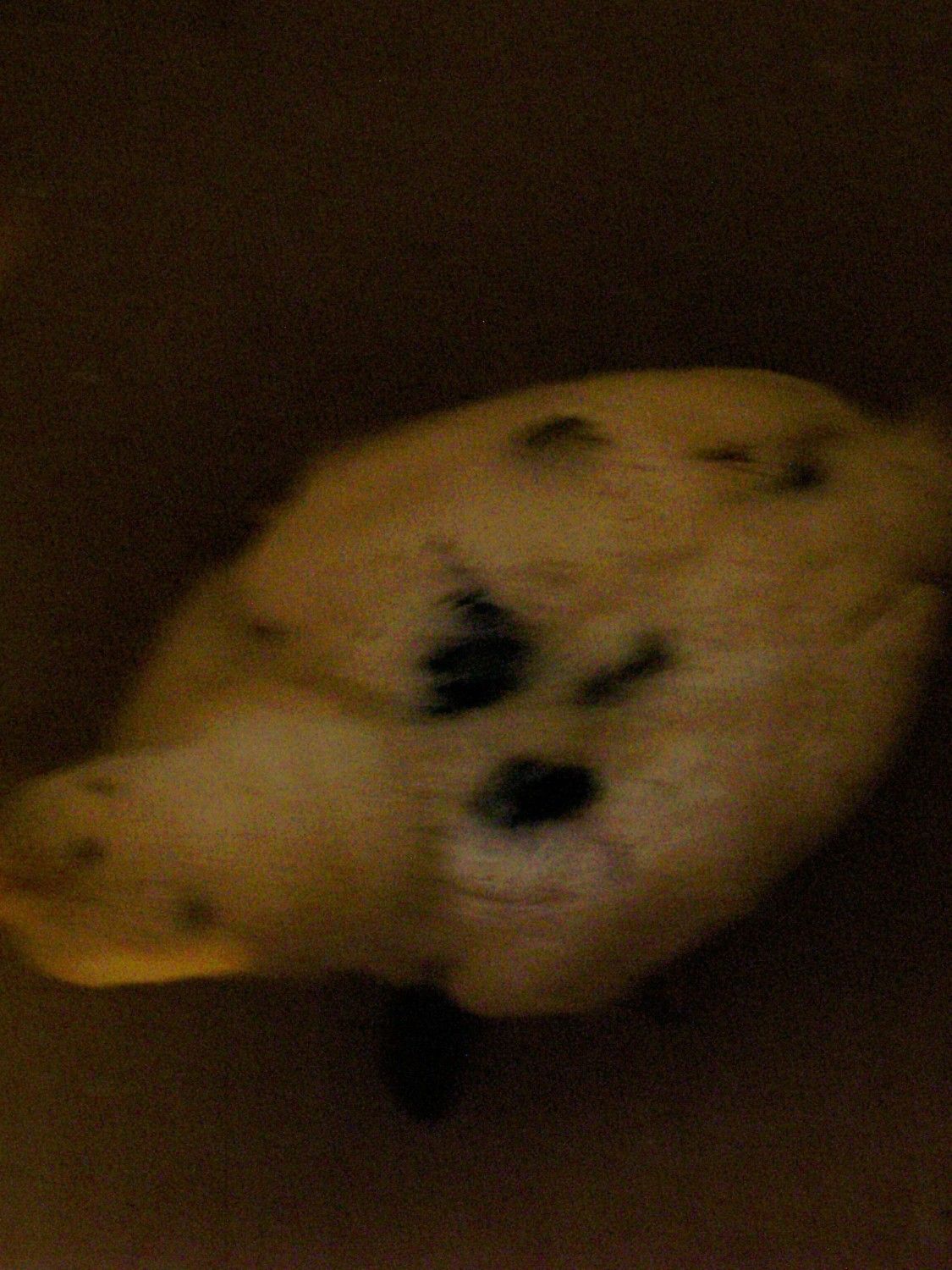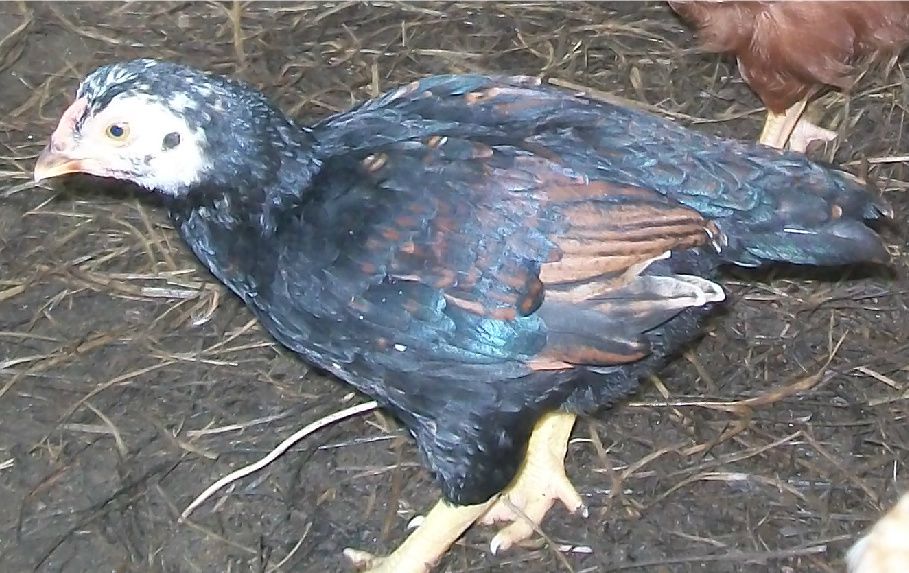Navigation
Install the app
How to install the app on iOS
Follow along with the video below to see how to install our site as a web app on your home screen.
Note: This feature may not be available in some browsers.
More options
You are using an out of date browser. It may not display this or other websites correctly.
You should upgrade or use an alternative browser.
You should upgrade or use an alternative browser.
Cornish Thread
- Thread starter Jx2inNC
- Start date
I've got new chicks too, but unfortunately no broody to hatch and raise them.

These are a mix of Cornish from my white pen, one from my dark pen, and the big fluffy chicks with muffs are a cross of an Ameraucana over Cornish Rocks. As you can see, I have another black from my WCs.



There is also one chick from a half hatchery WLRC under a quality Dark Cornish, and one that's 3/4 Cornish, 1/4 Black Ameraucana in there, but I don't see them in either group shot. The last picture is a WC that may or may not feather white, but some of the older chicks are feathering with some black.

These are a mix of Cornish from my white pen, one from my dark pen, and the big fluffy chicks with muffs are a cross of an Ameraucana over Cornish Rocks. As you can see, I have another black from my WCs.



There is also one chick from a half hatchery WLRC under a quality Dark Cornish, and one that's 3/4 Cornish, 1/4 Black Ameraucana in there, but I don't see them in either group shot. The last picture is a WC that may or may not feather white, but some of the older chicks are feathering with some black.
Last edited:
I read somewhere that LF blacks were developed some time ago, but never accepted by the APA. I know Black Cornish bantams are accepted; and though I've usually glanced at the bantam Cornish at the few shows I've been to, have never seen any. Since I see black pigment on many of the black varieties of other breeds that call for clean yellow shanks, I'm guessing it must be difficult to breed the black pigment out. I've never seen day old chicks from breeds like Black Wyandottes, so no idea what color of shanks they hatch with. My oldest black chicks are slowly getting some yellow on their shanks and beaks, but they hatch with no yellow showing there. The black chicks are showing some red in their flight feathers now.I am interested to see how those "painted" chicks look when grown out.
It'll be a suprise for sure
As I've already stated, I believe my WC cock must have one copy of dominant white. I have not had anyone tell me for sure, but guessing Herring must have had dominant white in his WCs, Strait must have bred recessive white.
I don't know how they get birds called exchecquer, or those called paints, but would guess it must be a barring gene with some other modifier. I doubt that my chicks are "paints".

I'll try to get a picture soon of a white that is showing black feathers.
Last edited:
i don't know that much about it but here is what i have gathered from the paint silkie breeders... the color "paint" is dominant white with some kind of modifiers to let more of the black bleed threw the white... they breed the paints back to blacks about every 2 or 3 generations to get bigger and more black spots... i don't know if this would work on any other breeds tho...
I read somewhere that LF blacks were developed some time ago, but never accepted by the APA. I know Black Cornish bantams are accepted; and though I've usually glanced at the bantam Cornish at the few shows I've been to, have never seen any. Since I see black pigment on many of the black varieties of other breeds that call for clean yellow shanks, I'm guessing it must be difficult to breed the black pigment out. I've never seen day old chicks from breeds like Black Wyandottes, so no idea what color of shanks they hatch with. My oldest black chicks are slowly getting some yellow on their shanks and beaks, but they hatch with no yellow showing there. The black chicks are showing some red in their flight feathers now.
As I've already stated, I believe my WC cock must have one copy of dominant white. I have not had anyone tell me for sure, but guessing Herring must have had dominant white in his WCs, Strait must have bred recessive white.
I don't know how they get birds called exchecquer, or those called paints, but would guess it must be a barring gene with some other modifier. I doubt that my chicks are "paints".
I'll try to get a picture soon of a white that is showing black feathers.
Here are two feathering with a lot of black.
The flash did not function; this chick's base is actually silvery white, but it has the most black showing.

The flash worked on this one. It has less black, but two feathers in one wing are black.

It's back and tail.

The black does not show up in a true pattern, but neither is it as random as the dominant white CX's chicks sired by Ameraucanas. It mostly shows up in a series of dots starting at the center top of the head, and more or less appear where a DC chick's stripes would run.
The flash did not function; this chick's base is actually silvery white, but it has the most black showing.

The flash worked on this one. It has less black, but two feathers in one wing are black.

It's back and tail.

The black does not show up in a true pattern, but neither is it as random as the dominant white CX's chicks sired by Ameraucanas. It mostly shows up in a series of dots starting at the center top of the head, and more or less appear where a DC chick's stripes would run.
I'm not a great fan of Silkies, or Paint color even in horses. I'm hoping I have Appaloosa Cornish.i don't know that much about it but here is what i have gathered from the paint silkie breeders... the color "paint" is dominant white with some kind of modifiers to let more of the black bleed threw the white... they breed the paints back to blacks about every 2 or 3 generations to get bigger and more black spots... i don't know if this would work on any other breeds tho...

I was just joking about the "paint" pattern.
I am just jumping in, so bare with me, but its my understanding that the WC are a recessive mutation of the Blacks. With Bantams, to better the type, most breeders will put them in with good Blacks or Vice Verus. I could be wrong but thats just whats coming to me as I am typing.
Anyway, it lookd pretty neat!
I am just jumping in, so bare with me, but its my understanding that the WC are a recessive mutation of the Blacks. With Bantams, to better the type, most breeders will put them in with good Blacks or Vice Verus. I could be wrong but thats just whats coming to me as I am typing.
Anyway, it lookd pretty neat!
Thanks. When I saw the first black head pop up from an egg marked "WC", I was thinking more like "WHAT THE .... ???" than "Neat" LOL I was relieved to see the next one hatch silvery white, until it finally got completely out and I saw some black spots.I was just joking about the "paint" pattern.
I am just jumping in, so bare with me, but its my understanding that the WC are a recessive mutation of the Blacks. With Bantams, to better the type, most breeders will put them in with good Blacks or Vice Verus. I could be wrong but thats just whats coming to me as I am typing.
Anyway, it lookd pretty neat!
You undoubtedly know more about Cornish than I do. I had read the WC were developed in the 1890s off of [I think recessive] white Malay crossed to DC; and dominant white was introduced through Shamo to create WLRC a few years later. I did figure a few have "created" their own since, and guessed that some must have used WLRs and jubilee to cross with whites. I have only learned since my eggs hatched that many have mixed, and still continue to mix, all three varieties; and that some have allegedly added some Azil or even bred some Wyandotte in.
Last edited:
New posts New threads Active threads
-
Latest threads
-
Rooster's foot is rooting!
- Started by Beloved_Chicken
- Replies: 0
-
-
How do you keep your flock happy in the Winter?
- Started by ChickenShepherd_6116
- Replies: 1
-
-
-
-
Threads with more replies in the last 15 days
-
-
-
-
Chicken Butt Emergency ‼️ Please Help!
- Started by urlocalcrazychickenlady
- Replies: 69
-
Open Contest BYC Poultry Caption Contest 11-28-25 Pic by Ponypoor
- Started by TwoCrows
- Replies: 55
-
×




